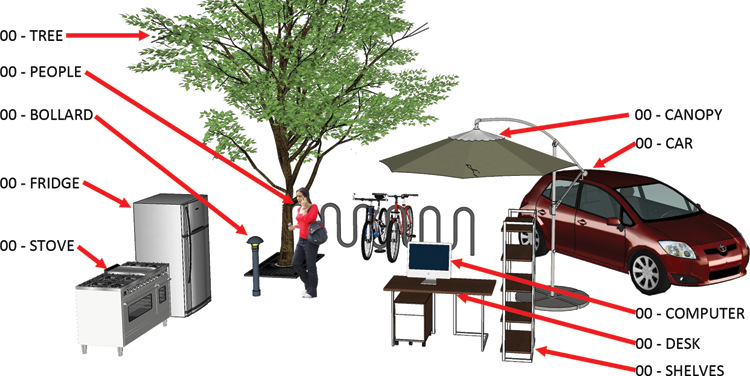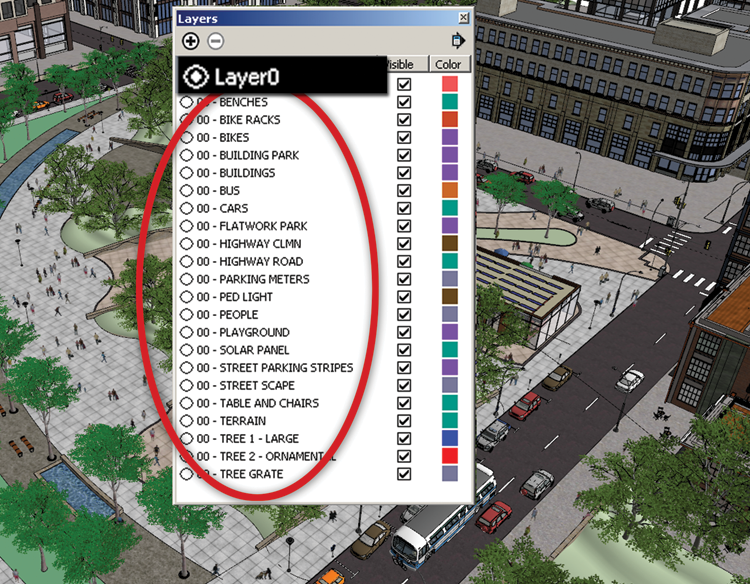Layering Strategy
Put everything on layers (Fig. 14.6). It’s that simple!
This strategy has several goals:
- Use layers so that you can toggle the geometry and objects On and Off. Your ability to toggle the geometry will make it easier to model and help maintain SketchUp performance.
- Place all inserted and created components on their own layers. Each component detail type should be on its own layer. The layer name must convey the description of the component.
- Keep layer names simple and straightforward.
- Clean up the layer list. Relocate layers that are imported from any CAD program.
Fig. 14.6: Components and the layer names for those components

Draft with Layer 0
When you’re drafting in SketchUp (adding faces, drawing lines, extruding faces), Layer 0 should be the active layer. Keep Layer 0 active and activate other layers only when you’re placing or inserting components into the model. Keeping the geometry on Layer 0 keeps the model clean (Fig. 14.7). Only the component itself, as a selected whole, should be placed on a layer.
Fig. 14.7: Layers 0 is highlighted at the top of the layer list.

Create Layers
Before you insert any premade components into the model, create layers. Create a layer for every component types you will insert. Use a logical naming convention, such ...
Get Rendering in SketchUp: From Modeling to Presentation for Architecture, Landscape Architecture and Interior Design now with the O’Reilly learning platform.
O’Reilly members experience books, live events, courses curated by job role, and more from O’Reilly and nearly 200 top publishers.

